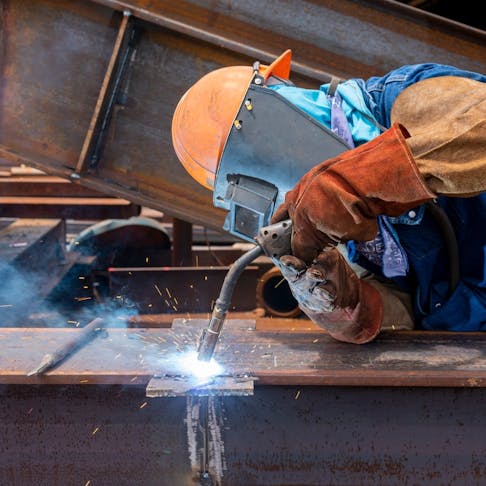Just how to Create an Effective Welding WPS: Tips and Ideal Practices
Just how to Create an Effective Welding WPS: Tips and Ideal Practices
Blog Article
The Ultimate Guide to Welding WPS Procedures: A Thorough Introduction for Welders
In the detailed globe of welding, Welding Procedure Specs (WPS) work as the backbone of making certain high quality, uniformity, and safety in welding operations. Recognizing the nuances of developing, carrying out, and keeping an eye on WPS treatments is vital for welders looking to elevate their craft and fulfill industry standards. As we delve right into the numerous parts of a WPS and check out the complexities of qualification and qualification, we will uncover the crucial function these procedures play in the realm of welding. Allow's begin on a journey to unwind the intricacies and relevance of WPS treatments in welding techniques.
Value of WPS Procedures
Recognizing the relevance of Welding Procedure Requirements (WPS) procedures is essential for guaranteeing the high quality and integrity of bonded frameworks. WPS procedures work as a roadmap for welders, describing the essential actions, specifications, and materials required to attain an audio weld. By sticking to WPS guidelines, welders can guarantee uniformity in their job, resulting in reliable and structurally audio welds.
One of the main factors why WPS treatments are important is their role in maintaining weld top quality and honesty. Following the specified welding criteria and methods laid out in the WPS aids prevent flaws such as porosity, splitting, or insufficient blend, which can jeopardize the toughness and resilience of the weld.

Components of a WPS
A Welding Treatment Requirements (WPS) typically comprises crucial parts that detail the details demands for implementing a weld, guaranteeing uniformity and top quality in the welding process. The crucial parts of a WPS include vital variables such as base steels, filler metals, interpass and preheat temperature levels, welding procedures, securing gases, welding positions, and post-weld warmth therapy demands.
Base metals refer to the materials being joined, while filler steels are used to load the void in between the base metals during welding. The welding process details the particular technique to be utilized, whether it's gas metal arc welding (GMAW), secured metal arc welding (SMAW), or another method. Welding placements define the orientations in which welding can be executed.

Qualification and Qualification
Having developed the necessary parts of a Welding Procedure Requirements (WPS), the emphasis now changes towards the important elements of qualification and accreditation in welding techniques.

Accreditation, on the various other hand, is the formal recognition of a welder's certifications by a relevant certification body or company. Welding accreditations are commonly based on the particular welding processes, products, and positions a welder is certified to collaborate with. Holding a legitimate welding qualification shows that a welder meets market criteria and is skilled to do welding tasks to the needed requirements.
Developing a WPS
To establish a Welding Treatment Spec (WPS) that satisfies industry criteria, cautious factor to consider of welding processes, materials, and operational parameters is necessary. The initial step in developing a WPS is to determine the welding procedure to be utilized, such as gas metal arc welding (GMAW) or protected metal arc welding (SMAW)

Applying and Monitoring WPS
Upon wrapping up the extensive great post to read Welding Procedure Spec (WPS) that meticulously information welding processes, products, functional parameters, and quality assurance steps, the focus shifts to successfully implementing and keeping an eye on the well established treatments. Application entails ensuring that all welders involved in the job recognize with the WPS and follow it diligently during the welding procedure. This requires giving adequate training and guidance to guarantee adherence to the defined procedures. Checking the WPS includes continual oversight to validate that welding activities align with the documented specifications. Examinations, testing, and quality control steps are necessary elements of the surveillance procedure to determine any problems or deviations promptly. Normal audits and evaluations of the welding treatments aid in preserving consistency and top quality throughout the job. Reliable application and surveillance of the WPS are essential for guaranteeing the honesty, toughness, and safety of the bonded joints, ultimately adding to the total success of the welding task.
Final Thought
Finally, understanding and adhering to Welding Treatment Specs (WPS) is crucial for welders to make certain top quality, uniformity, and security in their work. By understanding the parts of a WPS, acquiring proper qualifications and qualifications, developing comprehensive procedures, and applying and checking them successfully, welders can improve their abilities and effectiveness in welding methods. Complying with WPS treatments is crucial for producing high-grade welds and meeting sector standards.
In the complex world of welding, Welding Procedure Specifications (WPS) offer as the backbone of guaranteeing quality, uniformity, and security in welding operations. The welding process describes the certain strategy to be used, whether it's gas metal arc welding (GMAW), protected metal arc welding (SMAW), or one more approach.To create a Welding Procedure Specification (WPS) that fulfills market requirements, careful factor to consider of welding processes, materials, and functional parameters is important. The article first action in creating a WPS is to identify the welding process to be made use click here for more info of, such as gas steel arc welding (GMAW) or protected metal arc welding (SMAW)Upon settling the detailed Welding Treatment Specification (WPS) that diligently information welding processes, materials, functional criteria, and top quality assurance steps, the emphasis moves to properly applying and monitoring the well established procedures.
Report this page